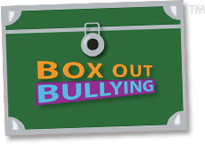One Phrase That Changes Everything

Will this year be better for my kid? Will they feel safe? Included? Heard?
These are the questions we hear from parents across the country. And while bullying is a top concern, there’s another layer to it: even when a child knows something isn’t right, they often don’t know how to get help without becoming a target themselves.
That fear is real. And it keeps a lot of kids silent.
So let’s talk about how you can teach your child to speak up without putting themselves at risk.
Why Kids Stay Silent
I remember one summer workshop we ran for incoming middle schoolers. A student named Elijah shared something I’ll never forget. He said, “When I saw my friend getting picked on last year, I wanted to help. But I didn’t want it to turn on me. So I just watched. I still feel bad about it.”
What Elijah said is something we hear all the time — from students in big cities and small towns. They want to help. But they’re scared. And that fear? It’s valid. No child wants to be the next target.
So instead, they do nothing. Or they tell themselves it’s not their business. Or worse, they laugh along, hoping to blend in.
The truth is, staying silent doesn’t make kids safe — it makes them feel powerless.
The Power of Getting Help — The Right Way
At Box Out Bullying student assemblies, we teach something called strategic upstanding. That means showing students how to stand up — in ways that are safe, smart, and effective.
They don’t need to confront the bully face-to-face. They don’t need to call them out in front of a crowd. Most of the time, the most powerful move is finding an adult they trust and sharing what they saw.
Getting help is not tattling. It’s not being a snitch. It’s being part of the solution.
When a student sees someone being hurt and chooses to act — even quietly — they shift the power dynamic. The bully loses control. The target feels less alone. And the bystander becomes something more: an upstander.
What This Looks Like at Home
You don’t have to wait for school to start to talk about this. August, with its long car rides and late-night ice cream runs, is actually the perfect time to bring it up.
Start small. Ask your child if they’ve ever seen someone being picked on. Ask what they did, or what they wish they’d done. Let them know it’s normal to feel unsure. But remind them they always have options.
You can share your own story, too. Maybe there was a time you saw something unfair happen — at work, in school, even in your own family — and you weren’t sure what to do. Talk about what you learned.
When you normalize these conversations, you make it easier for your child to come to you later — not just when they’ve been bullied, but when they’ve seen it happen to someone else.
One Phrase Can Make All the Difference
There’s a phrase we teach students during our Box Out Bullying student assemblies: “That’s not okay — I’m getting help.” It’s short. It’s powerful. And most importantly, it gives them a plan.
Kids don’t need a script for every situation, but having one go-to phrase can lower the barrier to action. When they feel unsure, they can fall back on it. It gives them permission to speak without escalating the situation. It gives them control.
Parents can use this phrase at home, too. Practice it. Say it out loud together. Ask your child when they might use it. Reinforce that getting help is brave, not weak.
It Starts With You
If you want your child to speak up for others, speak up for them. If you want them to get help, show them how. Ask questions. Share stories. Show them what it looks like to advocate without fear.
No child should have to choose between being safe and doing the right thing. When we equip them with tools, words, and confidence, we change that.
And it all starts with one phrase.
Ready to help your school and community build a culture of courage and empathy? Explore our Parent Workshops and learn how you can make a difference before the first bell even rings.
